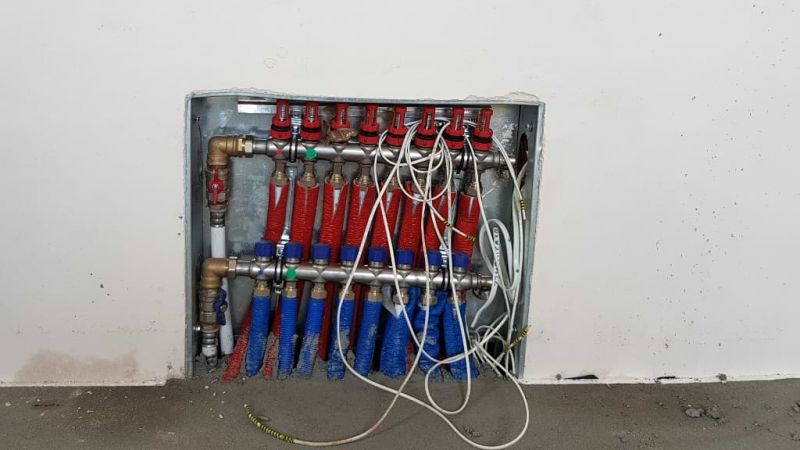I have underfloor heating in the house, floor and ground floor, a total of approx. 240 sq m. The heating is separated so that each room has a separate circuit (loop) fastened to the manifold (one for each floor). There is no automation on the manifolds (only valves). There is a single-function condensing oven with a weather sensor and a smart controller, but placed on the stove so far (fresh thing, the stove started on Saturday).
I have two options to play the topic of heating control.
Option 1
The furnace control remains on the furnace. The furnace will control the temperature of the heating water based on the outside temperature (from the sensor) using the temperature set on the furnace but also according to the heating curve set there instead of reading the real temperature in the rooms. In the rooms there will be thermostats that will control the valves on the manifolds, if necessary, opening or throttling the flow of water in a given circuit (loop).
Option 2
The furnace controller is moved from the boiler room to the hall below, or a second one at the top. The furnace controls the water temperature based on the measurement of the real interior temperature, thus correcting the heating curve (and probably somehow taking into account the outside temperature). We do not install thermostats or actuators in manifolds, we set them manually on manifolds or throttling in some rooms so as to obtain an appropriate temperature distribution.
Which of these options is better?
Specialists in underfloor heating (those who made them) say that option 1 should be used. However, I think that option 2 may be much better, more sensible - because there is a chance for less gas consumption, especially since the house is b. solidly thermally insulated.
I have two options to play the topic of heating control.
Option 1
The furnace control remains on the furnace. The furnace will control the temperature of the heating water based on the outside temperature (from the sensor) using the temperature set on the furnace but also according to the heating curve set there instead of reading the real temperature in the rooms. In the rooms there will be thermostats that will control the valves on the manifolds, if necessary, opening or throttling the flow of water in a given circuit (loop).
Option 2
The furnace controller is moved from the boiler room to the hall below, or a second one at the top. The furnace controls the water temperature based on the measurement of the real interior temperature, thus correcting the heating curve (and probably somehow taking into account the outside temperature). We do not install thermostats or actuators in manifolds, we set them manually on manifolds or throttling in some rooms so as to obtain an appropriate temperature distribution.
Which of these options is better?
Specialists in underfloor heating (those who made them) say that option 1 should be used. However, I think that option 2 may be much better, more sensible - because there is a chance for less gas consumption, especially since the house is b. solidly thermally insulated.



